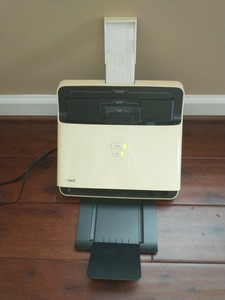

In an organizational setting, you might create an account specifically for the device. Specify the Google account to receive your scans using your Gmail or G Suite address. For example, when configuring scan-to-cloud for an HP printer, I opened my browser to. Switch to your browser and go to the address specified on your scanner/printer. (Note: You may need to register your device with the manufacturer’s web services before you continue.) 2. Once you locate it, open it to start the connection process. You’ll likely need to navigate through a few menus on your device to find it. Instead, look for Google Drive somewhere in the apps option on your scanner. When you select scan, you’ll typically see destinations such as a computer, an SD card, or email. Select the Google Drive app on your scanner

Follow the steps below to connect your scanner to Google Drive. You’ll also need access to both a web browser and the Google account where you want to store scanned items. For example, I’ve configured both Brother and HP printers to scan directly to Google Drive. To enable the ability to scan directly to Google Drive you’ll need a network-connected scanner–or a multi-function printer/scanner–that supports a Google Drive connection. Unlike locally-stored files, documents on Google Drive are simple to share, accessible from anywhere, and easy to find with Cloud Search, which delivers keyword search (like Google search, but for your organization’s G Suite data). Scanned documents now go directly to Google Drive. Recently, though, these organizations moved to scan-to-cloud storage setups. Go-to resources for safe, secure cloud storage (TechRepublic Premium) The vanilla approach: How open source helps deliver multicloud successīecome a Microsoft Azure administrator online and start a great career Cloud: Must-read coverageĬloud security: How your public cloud environment may be vulnerable to data breach While many of these organizations used Google Drive and G Suite, most scanned documents to a local computer or server. The organizations I work with still deal with plenty of paper documents in the form of letters, documentation, articles, photos, or reference material.


 0 kommentar(er)
0 kommentar(er)
